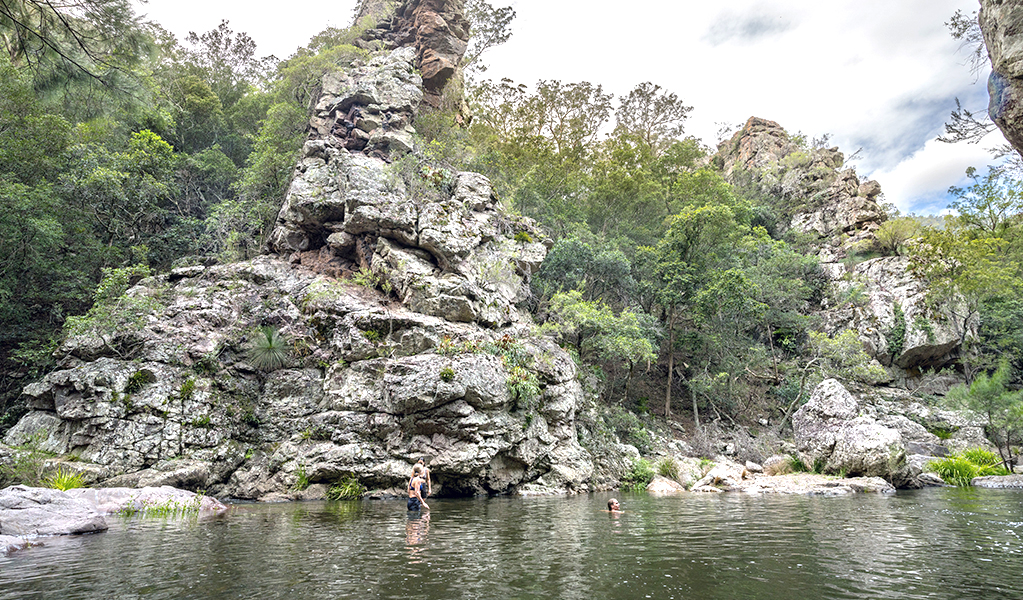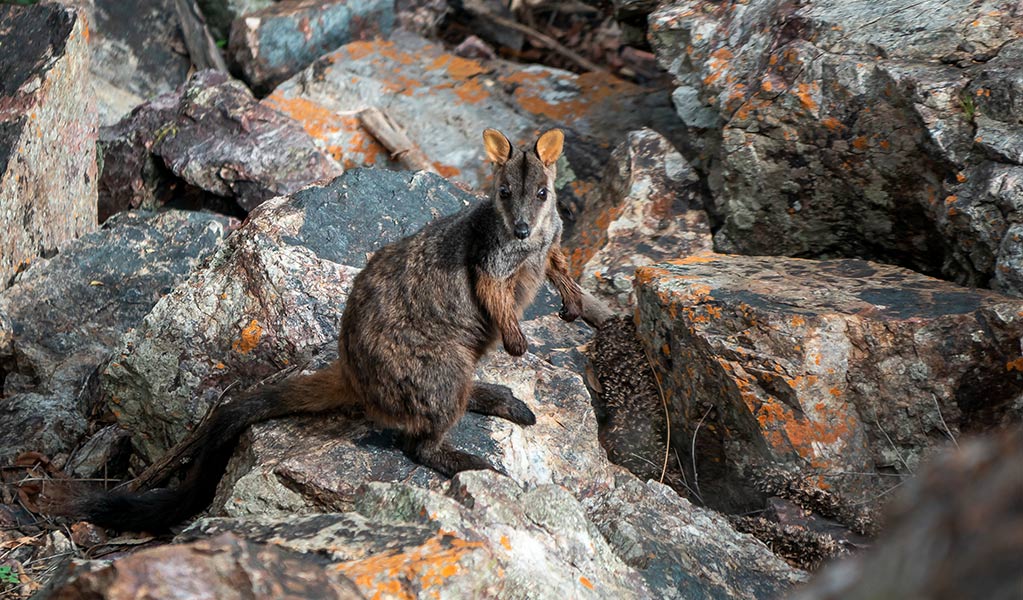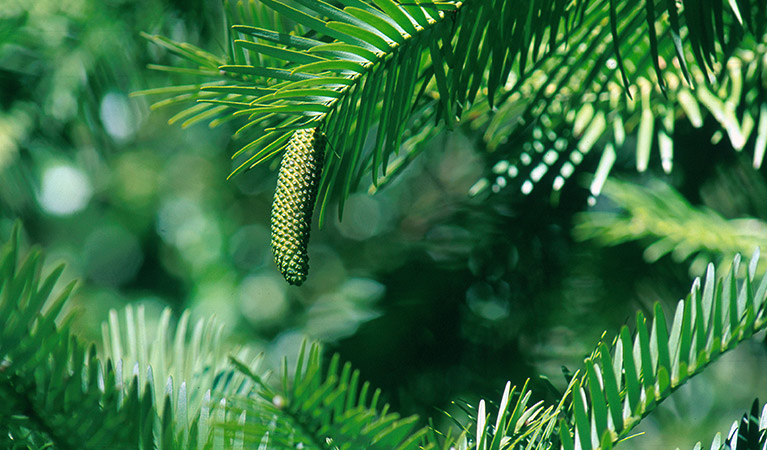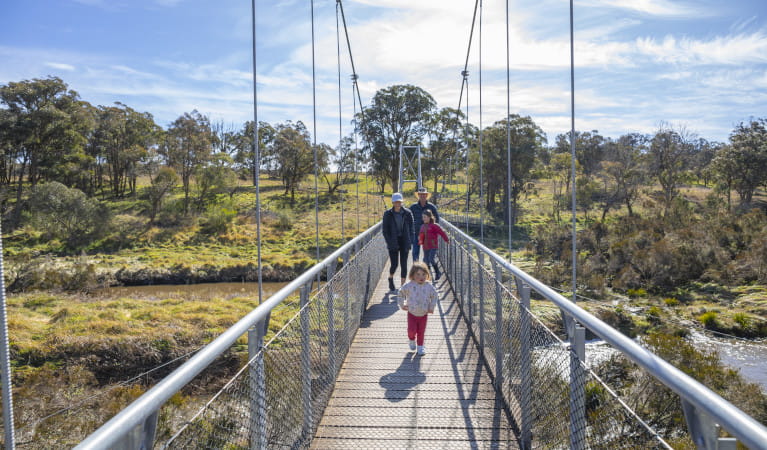Brush-tailed rock-wallaby cam
Oxley Wild Rivers National Park
Get up close to wildlife from anywhere in the world
Peek into the world of the endangered brush-tailed rock-wallaby without leaving home. Watch our live stream in Oxley Wild Rivers National Park any time from dawn to dusk.
Connect with nature from home
An endangered species in NSW, brush-tailed rock-wallabies are hard to see in the wild. They live in rugged terrain along rocky outcrops, cliffs, ledges and caves. Their steep rocky habitat is hard to access and their natural colouration provides perfect camouflage from predators, like foxes and feral cats. The live stream gives you a glimpse of this threatened species without leaving home.
When to tune in
Any time from dawn to dusk. The stream is live from 7am to 5pm (AEST) every day. Late afternoon until dusk will be the best time to catch a glimpse of these iconic creatures. Brush-tailed rock-wallabies are active all year round but in summer they may be less active in the middle of the day when they escape the heat.
Look out for
Little joeys peering out from mum’s pouch and ‘young at foot’ juveniles bouncing around. Keen sun seekers, you’ll catch them basking in the morning sun to warm up. When food is bountiful, you might see some mating.
Brush-tailed rock-wallabies are incredibly agile, moving confidently and swiftly around their rocky habitat using their long, thickly furred tail for balance and padded feet for grip. They can even climb trees. If the ‘brushies’ aren’t around, look carefully and you might spot other native animals like wallaroos, swamp wallabies, grey kangaroos and spotted-tailed quolls.
About this colony
We’ve placed the camera near a colony of around 10 brush-tailed rock-wallabies in the Green Gully area of Oxley Wild Rivers National Park. Can you spot their individual markings and unique fur colours?
The live stream will help rangers, scientists and researchers understand what’s changing and what we can do to protect this population—without interfering or disturbing them. This remote national park includes extensive areas of habitat for this species in NSW. The Green Gully area has over 80 known colonies that we monitor from the air. We’re looking at the impacts of feral predators on natural ecosystems and threatened species.
Bouncing back from bushfires
The 2019/20 fires burnt more than 80% of known brush-tailed rock-wallaby habitat in NSW.
All of the colonies surveyed in Oxley Wild Rivers National Park had areas of burnt habitat, yet 90 surviving individuals were spotted which is consistent with counts in previous years. Most of the colonies with surviving wallabies received emergency supplementary food drops of sweet potato, carrots and lucerne.
Throughout 2020, brush-tailed rock-wallabies and their young have been spotted bounding through the bush in Oxley Wild Rivers and Guy Fawkes River national parks—delighting NPWS staff surveying the impact of the bushfires.
Support our wildlife
Now more than ever our native wildlife needs our support. Here’s how you can help:
- Become a threatened species citizen scientist
- Learn more about the Saving our Species program which supports brush-tailed rock-wallaby conservation in NSW.
Please note this is not a curated feed. You’re watching brush-tailed rock-wallabies in their natural habitat, and you may see some other species too.





